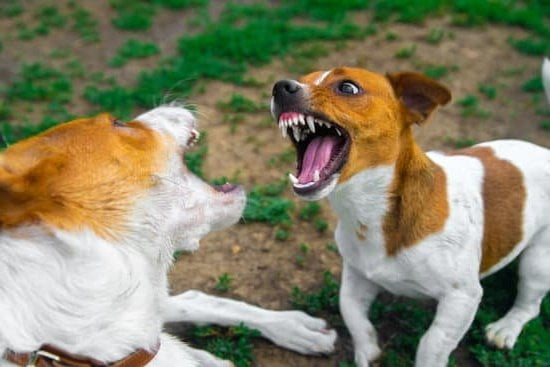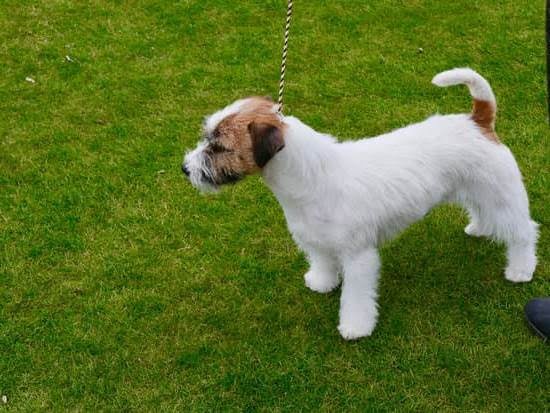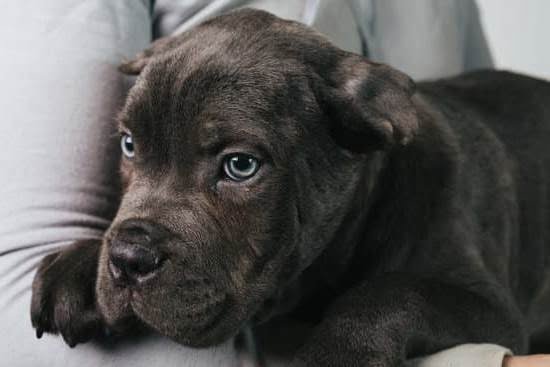Are you constantly asking yourself, “Can I train my dog not to lick me?” Many dog owners find themselves in a similar predicament, feeling conflicted about their furry friend’s affectionate yet sometimes slobbery behavior.
While dogs use licking as a form of communication and display of love, some owners may not appreciate the gesture for various reasons. This article delves into the reasons behind why some dog owners may not enjoy being licked by their pets and the significance of training them not to do so.
Understanding why dogs lick is crucial in addressing this behavior. Dogs may lick their owners to show affection, seek attention, or simply out of habit. However, excessive licking can have negative impacts, such as spreading germs, causing irritation, or even reinforcing unwanted behavior. It’s essential for dog owners to recognize the potential downsides of allowing their pets to excessively lick them and take proactive steps to address this issue through training and redirection techniques.
Positive reinforcement training is an effective method used to train dogs not to lick. By incorporating treats, praise, and rewards when your dog refrains from licking you, you can positively reinforce this desired behavior.
Additionally, redirecting your dog’s attention when they attempt to lick you by offering a toy or engaging them in a different activity can help shift their focus away from licking. Consistency in training efforts is key, and it’s crucial for all family members to follow the same rules in order to effectively teach your dog not to lick.
Understanding Why Dogs Lick
Dogs are known for their licking behavior, which can be a sign of affection, seeking attention, or just a habit they have developed. Understanding why dogs lick is essential in addressing this behavior and potentially training them not to do so. By recognizing the underlying reasons behind this action, dog owners can take steps to redirect their pets’ behavior in a positive way.
Here are some common reasons why dogs lick:
- Showing affection: Licking is one way that dogs show their love and attachment to their owners. It’s a natural behavior for them to express their fondness and bond with humans.
- Seeking attention: Dogs may lick as a way to seek attention from their owners. If they feel ignored or want interaction, licking may be their way of communicating this need.
- Simply out of habit: In some cases, dogs may lick simply out of habit or as a self-soothing behavior. It could be a learned response that they engage in without much thought.
Recognizing the motivation behind your dog’s licking behavior is the first step in addressing it. By understanding why your dog licks, you can tailor your training approach to effectively teach them not to engage in this behavior when it is unwanted.
- Dogs licking is natural and instinctual but can become problematic if it interferes with daily life.
- Preventing excessive licking helps maintain good hygiene and prevents the spread of germs.
- Through positive reinforcement techniques and consistent training, you can train your dog not to lick you excessively.
Negative Impacts of Excessive Licking
Dogs are known for their loving nature and often use licking as a way to show affection towards their owners. However, excessive licking can have negative impacts on both the dog and the owner. One of the main concerns is the spread of germs through saliva, which can lead to infections or illnesses. Dogs explore the world with their mouths, so any bacteria or pathogens they come into contact with can easily be transferred through licking.
In addition to health concerns, excessive licking can also cause skin irritation or allergies in some individuals. The rough texture of a dog’s tongue combined with constant contact can lead to redness, itching, or even open sores on the skin. This can be particularly problematic for people with sensitive skin or those who have allergies to pet dander or saliva.
Moreover, allowing your dog to lick you excessively without setting boundaries may reinforce unwanted behavior. If a dog learns that licking results in attention or affection from their owner, they may continue this behavior even when it’s not appropriate. It’s essential for dog owners to establish clear guidelines and train their dogs not to lick in excess through positive reinforcement techniques and consistent redirection strategies.
| Negative Impacts of Excessive Licking | Exploring Potential Downsides |
|---|---|
| Spreading Germs | Dogs’ mouths carry bacteria |
| Causing Irritation | Skin allergies from rough tongues |
| Reinforcing Unwanted Behavior | Licking leads to attention |
Positive Reinforcement Training
Dogs naturally use licking as a way to communicate and show affection, but some dog owners may not enjoy being constantly licked. So, the question arises: can I train my dog not to lick me? The answer is yes, with the right approach and consistency, you can successfully teach your furry friend to refrain from licking you. Positive reinforcement training is a powerful tool in modifying your dog’s behavior, including their urge to lick.
To begin the process of training your dog not to lick you, it is essential to understand why dogs lick in the first place. Dogs may lick as a way to show affection, seek attention, or simply out of habit. However, excessive licking can lead to negative consequences such as spreading germs, causing irritation on your skin, or reinforcing undesirable behavior. By addressing this behavior through positive reinforcement techniques, you can effectively discourage your dog from licking you.
Here are some effective ways to implement positive reinforcement training in teaching your dog not to lick:
- Use treats: Whenever your dog refrains from licking you or redirects their behavior elsewhere, reward them with tasty treats.
- Praise and petting: Verbal praise and physical affection can also be used as rewards when your dog displays the desired behavior of not licking.
- Rewards: In addition to treats and praise, consider using toys or playtime as rewards for good behavior.
By consistently rewarding your dog for not licking you and redirecting their focus onto other activities using positive reinforcement techniques, you can effectively train them not to engage in this unwanted behavior. Remember that patience and persistence are key when training your furry companion – with time and effort, you can successfully teach your dog not to lick you.
Redirecting Behavior
When it comes to the question “Can I train my dog not to lick me?” the answer is yes, you can. Many dog owners find themselves in a situation where their furry friends shower them with unwanted licks. While some may enjoy this display of affection, others might find it unpleasant or even irritating. It’s essential to understand why dogs lick in the first place and how to redirect this behavior effectively.
Dogs have various reasons for licking their owners, ranging from showing affection and seeking attention to simply being a learned behavior. However, excessive licking can lead to negative consequences such as spreading germs, causing skin irritation, or reinforcing unwanted behavior. This is why training your dog not to lick you is crucial for maintaining a healthy and respectful relationship.
One effective way to teach your dog not to lick you is through positive reinforcement training. By rewarding your pup with treats, praise, or toys when they refrain from licking you, you are encouraging them to repeat this desired behavior. Consistency is key in this process, as dogs thrive on routine and clear expectations.
Redirecting their behavior by offering them an alternative activity or toy can also help reinforce the idea that licking is not acceptable. By following these tips and remaining patient, you can successfully train your dog not to lick you in no time.
| Reasons for Dog Licking | Negative Impacts of Excessive Licking |
|---|---|
| Affection | Spreading Germs |
| Attention-Seeking | Skin Irritation |
| Learned Behavior | Reinforcing Unwanted Behavior |
Consistency Is Key
Importance of Consistency
Consistency is crucial when it comes to training your dog not to lick you. Dogs thrive on routine and clear expectations, so sending mixed signals can confuse them. If one family member allows licking while another discourages it, your dog may struggle to understand what behavior is expected of them. It’s essential for all members of the household to be on the same page when it comes to setting boundaries around licking.
Setting Clear Boundaries
To effectively train your dog not to lick you, establish clear boundaries and rules from the start. Decide together as a family how you want to address the behavior and ensure everyone follows through consistently. Whether you choose to redirect your dog’s attention, use positive reinforcement, or implement a no-licking command, make sure that these guidelines are communicated and enforced by all family members.
Staying Persistent
Training your dog not to lick may take time and patience, but consistency is key to success. Even if progress seems slow at first, continue reinforcing the desired behavior and redirecting any attempts at licking. Remember that every interaction with your dog is an opportunity for training, so seize those moments to reinforce positive behaviors. With unwavering consistency and dedication from all family members, you can I train my dog not to lick me
Seeking Professional Help
When to Seek Professional Help
If you find that despite your best efforts, your dog continues to excessively lick you and is not responding to the training techniques you have implemented, it may be time to seek professional help. A professional dog trainer or behaviorist
Benefits of Professional Assistance
Professional dog trainers and behaviorists have the expertise and experience needed to understand your dog’s behavior more thoroughly. They
Working With a Trainer or Behaviorist
When seeking professional help for training your dog not to lick you, it’s important to choose a reputable and qualified trainer or behaviorist. Look for individuals who use positive reinforcement techniques and have experience working with similar behavioral issues. By working closely with a professional, you
Conclusion
In conclusion, the question “Can I train my dog not to lick me?” is one that many dog owners ponder, especially if they find excessive licking bothersome or unhygienic. Understanding the reasons behind why dogs lick, whether it’s for affection, attention-seeking, or out of habit, is crucial in addressing this behavior. While licking may seem harmless at first, it can have negative impacts such as spreading germs, causing irritation, or reinforcing unwanted behavior.
Positive reinforcement training emerges as a effective technique in teaching dogs not to lick their owners. By utilizing treats, praise, and rewards, dog owners can encourage alternative behaviors and discourage licking. Consistency is key in this training process; all family members must be on board with implementing the same rules and redirection techniques consistently to ensure success.
For those facing challenges in training their dogs not to lick them despite their best efforts, seeking professional help from a dog trainer or behaviorist can be beneficial. Patience and persistence are essential traits for dog owners embarking on this training journey. With dedication and the right techniques, pet parents can successfully teach their furry companions not to lick them and strengthen their bond in a positive way.
Frequently Asked Questions
How Do I Train My Dog to Stop Licking Me?
Training a dog to stop licking you requires consistency and positive reinforcement. One approach is to redirect their behavior by giving them a toy or treat when they try to lick you. You can also teach them the “leave it” command to discourage licking.
Can a Dog Be Trained to Not Lick?
Yes, a dog can be trained not to lick through consistent training and redirection. It’s important to remember that dogs use licking as a way to show affection or seek attention, so providing alternative behaviors for them can help change this habit over time.
Is It Okay to Stop My Dog From Licking Me?
It is okay to stop your dog from licking you if their behavior becomes excessive or unwanted. While licking can be a sign of affection, setting boundaries for your pet is important for maintaining a healthy relationship. By redirecting this behavior, you can still bond with your dog without allowing excessive licking.

Welcome to the blog! I am a professional dog trainer and have been working with dogs for many years. In this blog, I will be discussing various topics related to dog training, including tips, tricks, and advice. I hope you find this information helpful and informative. Thanks for reading!





